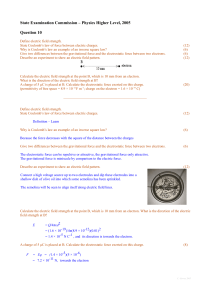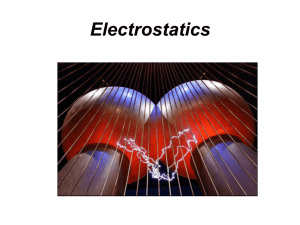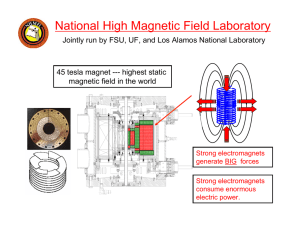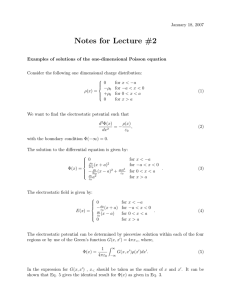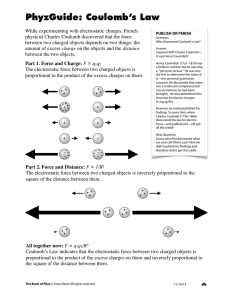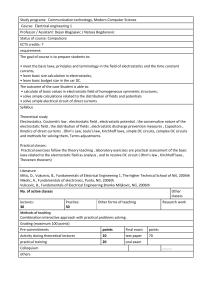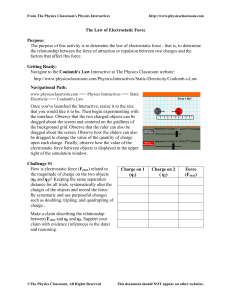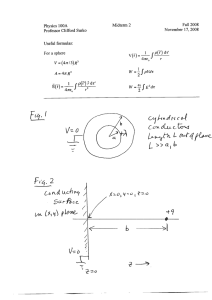Electric.fields.and.Equipotentials.lab
advertisement
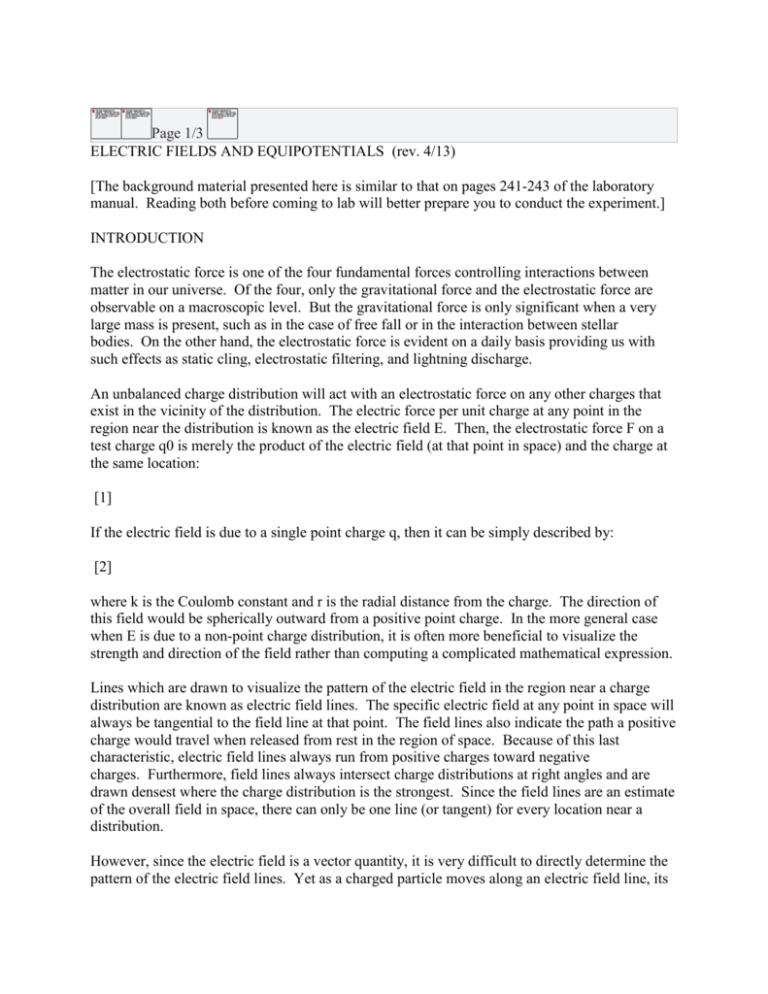
Page 1/3 ELECTRIC FIELDS AND EQUIPOTENTIALS (rev. 4/13) [The background material presented here is similar to that on pages 241-243 of the laboratory manual. Reading both before coming to lab will better prepare you to conduct the experiment.] INTRODUCTION The electrostatic force is one of the four fundamental forces controlling interactions between matter in our universe. Of the four, only the gravitational force and the electrostatic force are observable on a macroscopic level. But the gravitational force is only significant when a very large mass is present, such as in the case of free fall or in the interaction between stellar bodies. On the other hand, the electrostatic force is evident on a daily basis providing us with such effects as static cling, electrostatic filtering, and lightning discharge. An unbalanced charge distribution will act with an electrostatic force on any other charges that exist in the vicinity of the distribution. The electric force per unit charge at any point in the region near the distribution is known as the electric field E. Then, the electrostatic force F on a test charge q0 is merely the product of the electric field (at that point in space) and the charge at the same location: [1] If the electric field is due to a single point charge q, then it can be simply described by: [2] where k is the Coulomb constant and r is the radial distance from the charge. The direction of this field would be spherically outward from a positive point charge. In the more general case when E is due to a non-point charge distribution, it is often more beneficial to visualize the strength and direction of the field rather than computing a complicated mathematical expression. Lines which are drawn to visualize the pattern of the electric field in the region near a charge distribution are known as electric field lines. The specific electric field at any point in space will always be tangential to the field line at that point. The field lines also indicate the path a positive charge would travel when released from rest in the region of space. Because of this last characteristic, electric field lines always run from positive charges toward negative charges. Furthermore, field lines always intersect charge distributions at right angles and are drawn densest where the charge distribution is the strongest. Since the field lines are an estimate of the overall field in space, there can only be one line (or tangent) for every location near a distribution. However, since the electric field is a vector quantity, it is very difficult to directly determine the pattern of the electric field lines. Yet as a charged particle moves along an electric field line, its potential energy changes due to work being done on the charge by the electrostatic force. Energy, being a scalar quantity, is much easier to measure with ordinary laboratory equipment. An unbalanced charge distribution also creates a potential energy per unit charge at every location in the vicinity near the distribution. Another name for this potential energy per unit charge is the electric potential. The difference between the electric potential at any two points in space is known as potential difference, or in more common usage, voltage. The SI unit for electric potential (or potential difference) is the Volt, equivalent to a Joule per Coulomb. The relationship between field and potential is given by: Next Page Find Go to Page Thumbnail Index Image View Download a Copy Close



